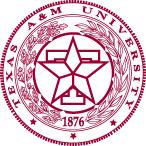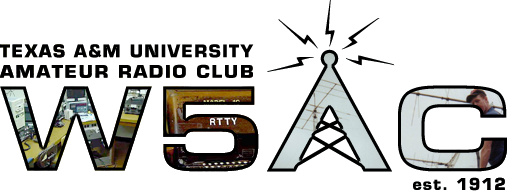



Search:
Callsign lookup:
APRS Locator:
(Type * after callsign for locations that might include a number suffix)
Emergency communications (sometimes called EmComm) is probably the biggest single topic in the amateur radio service. When all else fails, hams can still get messages through. Preparedness is the key, and several local groups are organized for emergency response.
Radio helps transmit urgent emergency messages, "health and welfare" traffic, tactical messages and whatever other traffic needs to be sent. "Health and welfare" means traffic with people in a disaster area regarding important but non-urgent health matters and/or meant to enhance the welfare of disaster victims. This typically includes helping families make sure their loved ones in the area are safe.
This list may not include every organization available in B/CS, but these are the primary contacts for volunteering hams.
Radio Amateur Civil Emergency Service - http://www.races.net/
The Brazos County RACES officer is Dick Zimmer, W5DZ. In the event of an emergency, the County Emergency Management Coordinator contacts Mr. Zimmer, who alerts RACES members to where they are needed. RACES primarily uses the top four repeaters listed in the Area Repeaters page.
The job of RACES is to provide communications to government agencies. Technically, it falls under the Federal Emergency Management Agency (FEMA), and during times of war, may become the only authorized amateur radio organization to continue operations. However, RACES is often treated like the non-government version, ARES (see below) and resources are pooled that otherwise might not be authorized for use with the strict RACES rules. More information is at http://www.arrl.org/FandES/field/pscm/sec1-ch4.html
RACES owns a disaster antenna trailer (license plate #194) which holds a directional, tri-band HF antenna (10, 15 and 20 meters). It will soon have a portable UHF repeater installed, too. The trailer may be used by any ham group with the approval of Brazos County RACES.
Amateur Radio Emergency Service - http://brazosares.org/
ARES is a non-government version of RACES that is sponsored by the ARRL, though sometimes the lines between these two similar organizations get blurred in actual use.
Community Emergency Response Team - https://www.citizencorps.fema.gov/cc/showCert.do?id=45102
Standing Ready, the local CERT initiative, works for general community preparation. CERT in particular focuses on helping first responders during emergencies.
Though not specifically an Amateur Radio organization, many new CERT members get ham licenses too, since ham frequencies are so useful for their mission. CERT should not be confused with CIRT, the TAMU Critical Incident Response Team, which is strictly on-campus emergency response that is organized by the University.
These organizations can be classified as "spotters" or "chasers". Storm spotters generally remain in one location, near a population center, and watch for severe weather "headed for town". Storm chasers actively travel towards expected severe weather outbreaks. They're usually researching this type of weather or acting like "mobile" spotters, though some chasers spot weather for TV stations, take pictures of weather professionally, or show severe weather to tourists.
SKYWARN - http://www.srh.noaa.gov/hgx/?n=skywarn
SKYWARN is a group of trained storm spotters who watch the weather and report severe conditions to emergency management (or directly to the National Weather Service). Storm spotters provide critical supplimental information to the NWS, information that even advanced Doppler radars may miss.
SKYWARN in this area is tied in with RACES. In fact, weather emergencies are the most frequent and likely emergencies for this area. College Station has housed hurricane refugees from the coast many times in the past; shelters need communications with Emergency Management officials, and "health and welfare" traffic becomes very important at these times.
We also experience local severe weather - we are in Tornado Alley! We may also suffer from hurricanes directly (moreso from their flooding rains and storm-spawned tornadoes than hurricane winds).
SKYWARN training sessions are usually held in the spring, and if a session isn't held on- or off-campus, it'll be held in a community nearby. Sessions are taught by personnel of the National Weather Service.
Lone Star Storm Spotters Network - http://www.lssn.us/
LSSN is an organized, statewide SKYWARN effort, formerly called Central Texas Storm Spotters. The network consists of spotters located generally in the eastern 2/3rds of Texas who coordinate activities and training, as well as communication.
The American Red Cross (ARC)
Salvation Army Team Emergency Radio Network - http://satern.org/
The W5AC club shack was formerly a backup emergency communications facility for the county; we were literally written into the emergency plans
Among other drills, W5AC participates in Field Day each year. Field Day acts as a nation-wide EmComm drill, and is held each year around the end of June. The club has a proven ability to operate in austere locations on generator power for an extended time, with procedures and equipment we use on an everyday basis.